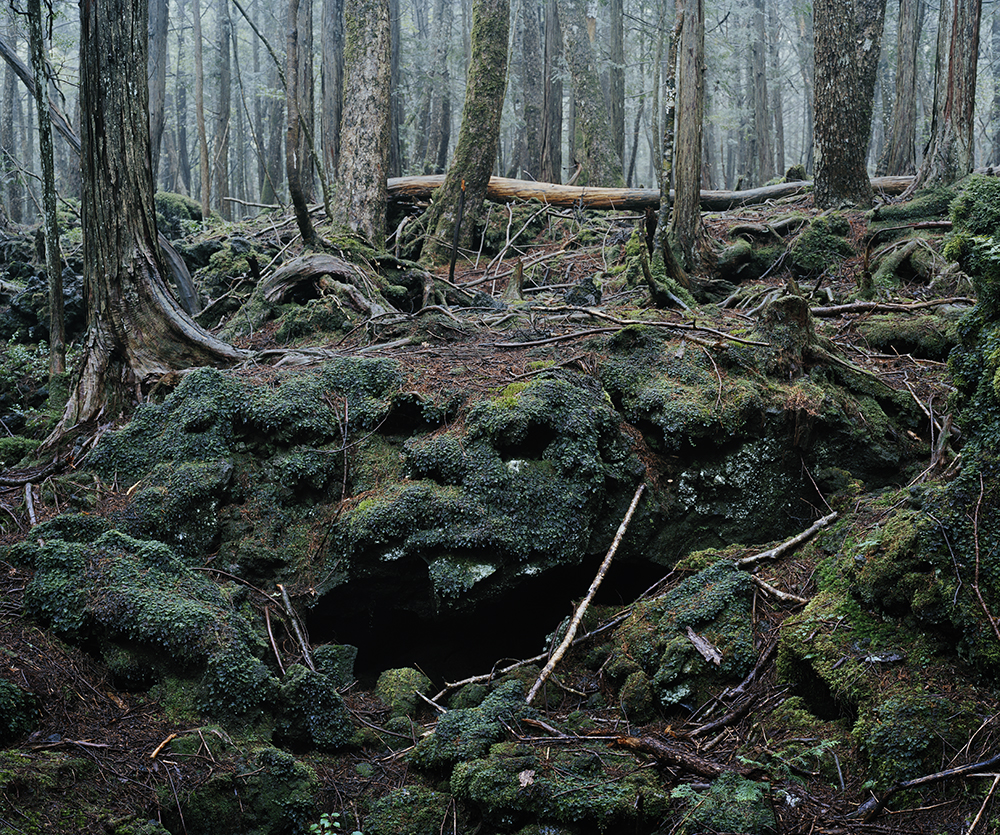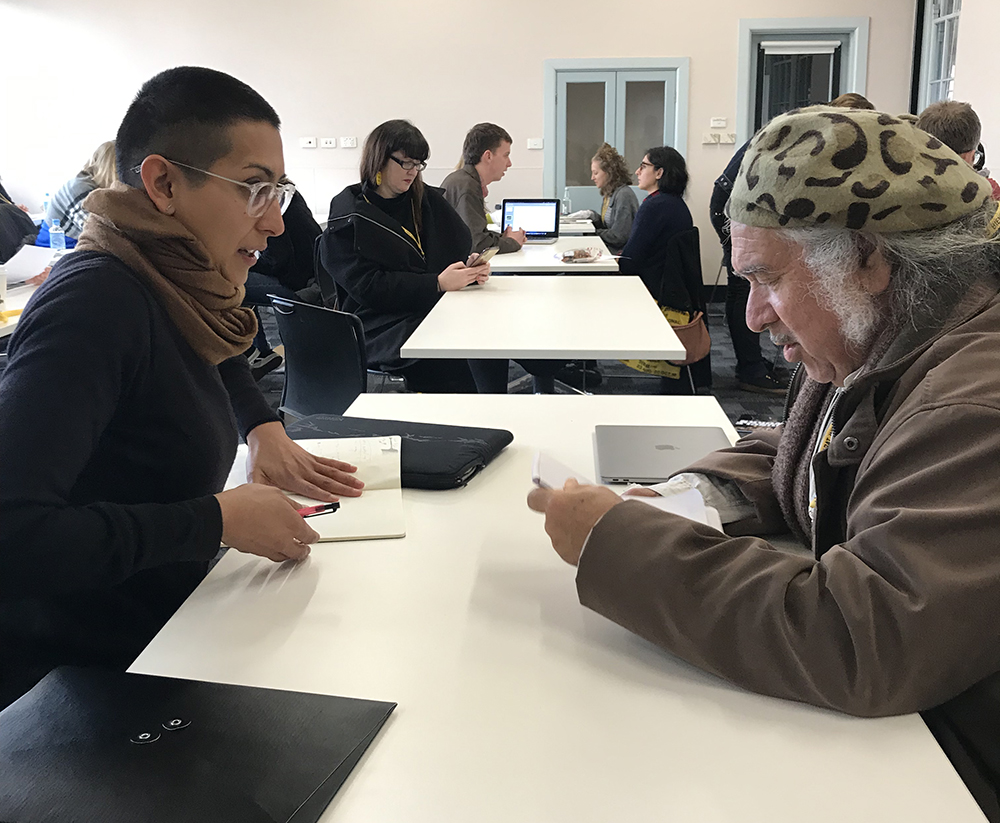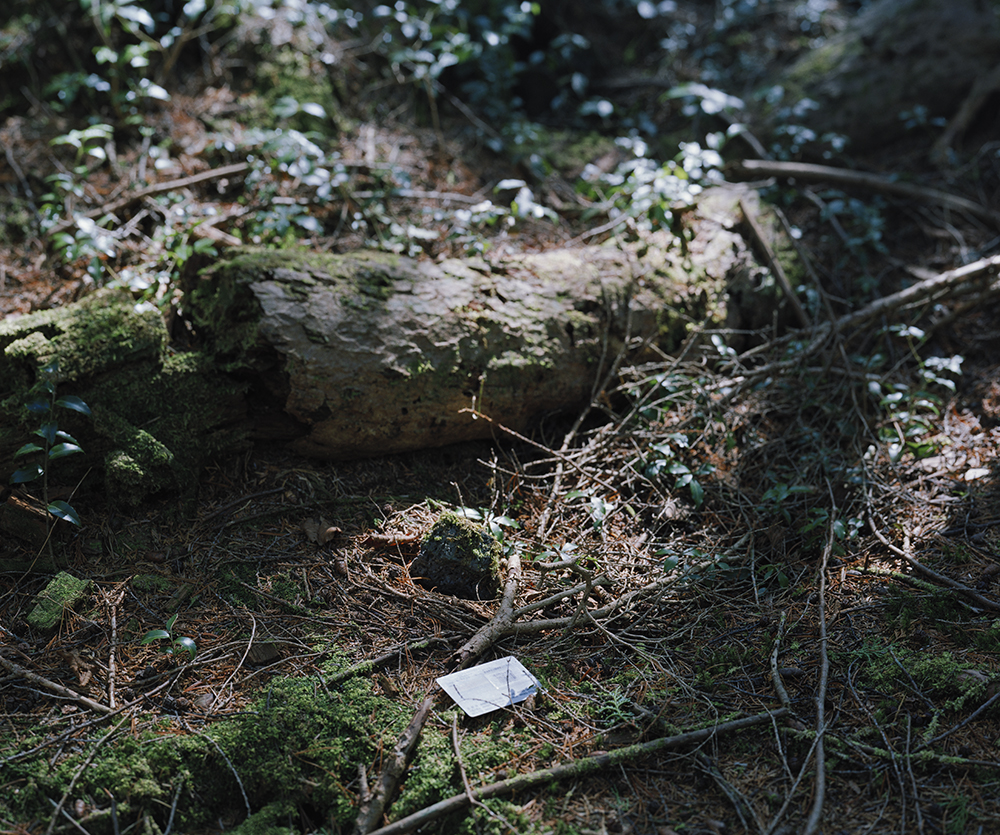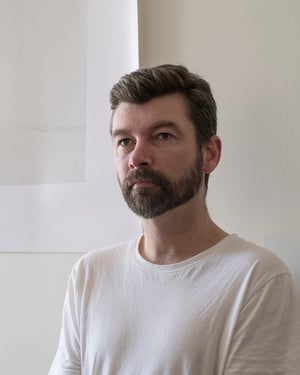PSC's Master of Arts - Photography Convenor Dr. Kristian Häggblom was one of 15 emerging curators from around the world invited to the In Focus Curator Forum by the Ballarat International Foto Biennale. Each participant had to present on a timely topic over the four-day event. The final day culminated in portfolio reviews given to selected photographers. Kristian gives us insights into the key issues discussed, his presentation on exhibiting photography in alternative spaces – and his own BIFB exhibit 'Aokigahara Jukai' which documents a forest at the foot of Mt. Fuji in Japan over nearly two decades.

Aokigahara Jukai: Cave by Dr. Kristian Häggblom
This was an invite only event, who were some of the local and international curators involved?
There were a number of senior and respected curators, these included Gwen Lee (Singapore), Alessandra Capdacqua (Florence), Peggy Sue Amison (Berlin), Djon Mundine OAM (Sydney) and Sim Lutton (Melbourne). It was also very insightful and an honour to have extensive conversations with Djon Mundine OAM.
What were some of the key issues the top curators from around the world talked about with you?
There was a lot of important discussion around themes related to representing the ‘other’ in photography – and this is very important to contemporary photography both as a practitioner and curator.
There were also many ideas and concerns expressed about the gender imbalance in the art/photography curatorial world.
This was interestingly challenged by Veronica Sanchis Bencomo from Venezuela who established the Foto Féminas, an online resource for promoting Latin American and Caribbean women photographers. She also established the ‘mobile photobook library’ that she physically wears and presents to the – often unassuming – public!

In Focus Forum Group Photo
Tell us about your presentation?
My presentation concentrated on two key themes: exhibiting photography in alternative spaces and cross-cultural exchange and collaboration. To open up a discussion on these themes I introduced two of my curatorial projects: The Kara-Rama Motel Project that was hosted in a 1960s style Motel in Mildura and the more recent Tsuka: an exhibition of contemporary Japanese photography that showcased the work of 24 artists and was held at the Centre for Contemporary Photography last year. For some interactivity I also took a stack of Japanese photobooks to facilitate further discussion.
The event ended with portfolio reviews, what where some of the trends you saw and advice you gave?
There was some great work and very enthusiastic participants. In fact, there was one PSC staff member and an MA student presenting folios. Certainly, there is a huge amount of interest in making photobooks to present to potential publishers and awards. Some good advice for participants is to expect varied and conflicting responses and advice on your work.

PSC Tutor Devika Bilimoria (left) with Djon Mundine OAM
You are exhibiting your work at Ballarat International Foto Biennale, tell us about your upcoming talk?
I am honoured to be included in the first exhibition at the new National Centre for Photography. It is curated by the wonderful Naomi Cass and Gareth Syvret and titled Capital – fitting considering the building is in a former bank. The exhibition features 13 artists that all respond to ideas related to currency and systems of value and exchange.
My work is titled Aokigahara Jukai and it is a project I have been working on for nearly 20 years that documents a forest at the foot of Mt. Fuji in Japan. Mt. Fuji is surrounded by both fascinating and disturbing locations that include five magical lakes, a theme park with an immense roller coaster, Self Defence Forces training grounds, a former cult bunker, etc. and the forest also has both a beautiful and dark side and complex cultural history.
What do you enjoy most about establishing and teaching the Master of Arts – Photography program at Photography Studies College?
It is really exciting to be involved and supervise student projects that are driven by in-depth research and have a substantial outcome – be that an exhibition, publication, screening, etc. It is also a dynamic educational environment with intensive periods of study that include guest speakers and visiting prominent cultural institutes throughout Melbourne. This keeps me also thinking and constantly engaged with the visual arts community. But most importantly, it is a privilege to work with students and staff where we can openly discuss and be critical about our work and ideas in a safe and collegial space.

Aokigahara Jukai: Membership Card by Dr. Kristian Häggblom
There are a lot of PSC teachers and graduates exhibiting at Ballarat, what does that say about the college?
It is so important that students are being taught and encouraged by practicing visual makers and thinkers. BIFB is certainly evidence of how committed and engaged PSC staff are. It also gives the students an opportunity to question (perhaps appreciate) staff projects and inject a sneaky question during public presentations.
I highly encourage students to visit Ballarat International Foto Biennale as there is so much to see and experience and especially to get involved with the pubic program. My personal highlights were the work of international experimental documentary-makers on insightful and concerning subject matter – Laia Abril and Mathieu Asselin.
Join Kristian for his BIFB talk about his exhibited work 'Aokigahara Jukai' 'Capital: In Conversation with Dr. Kristian Häggblom' on 7 September at 3pm at the National Centre for Photography in Ballarat. His work will be displayed at the festival till 20 October 2019.
 www.kristianhaggblom.com
www.kristianhaggblom.com